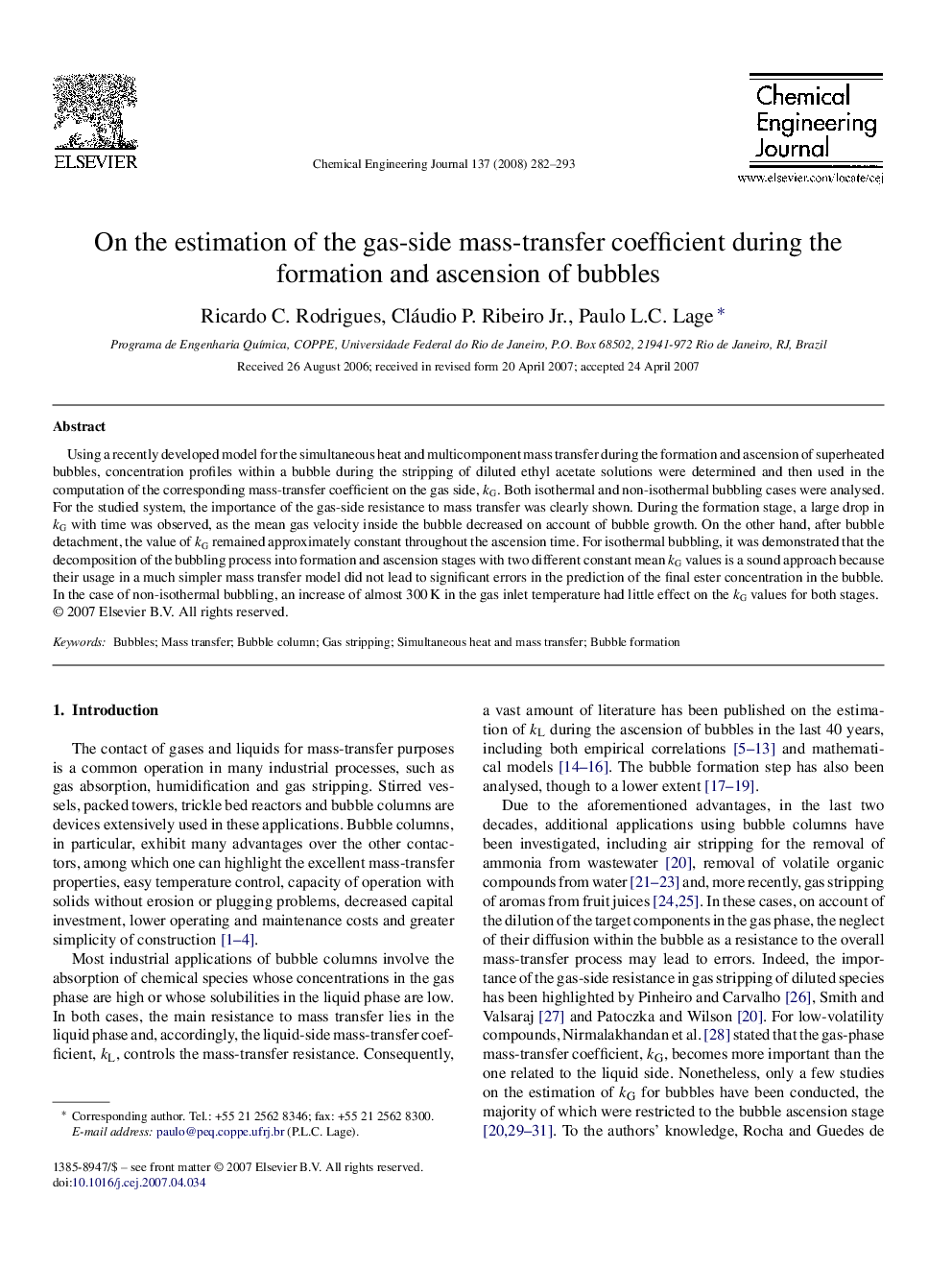| Article ID | Journal | Published Year | Pages | File Type |
|---|---|---|---|---|
| 153579 | Chemical Engineering Journal | 2008 | 12 Pages |
Using a recently developed model for the simultaneous heat and multicomponent mass transfer during the formation and ascension of superheated bubbles, concentration profiles within a bubble during the stripping of diluted ethyl acetate solutions were determined and then used in the computation of the corresponding mass-transfer coefficient on the gas side, kGkG. Both isothermal and non-isothermal bubbling cases were analysed. For the studied system, the importance of the gas-side resistance to mass transfer was clearly shown. During the formation stage, a large drop in kGkG with time was observed, as the mean gas velocity inside the bubble decreased on account of bubble growth. On the other hand, after bubble detachment, the value of kGkG remained approximately constant throughout the ascension time. For isothermal bubbling, it was demonstrated that the decomposition of the bubbling process into formation and ascension stages with two different constant mean kGkG values is a sound approach because their usage in a much simpler mass transfer model did not lead to significant errors in the prediction of the final ester concentration in the bubble. In the case of non-isothermal bubbling, an increase of almost 300 K in the gas inlet temperature had little effect on the kGkG values for both stages.
